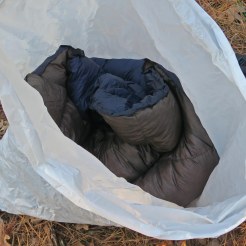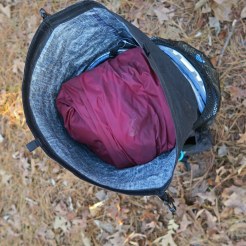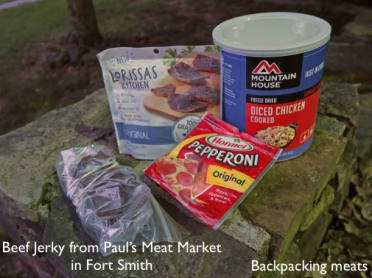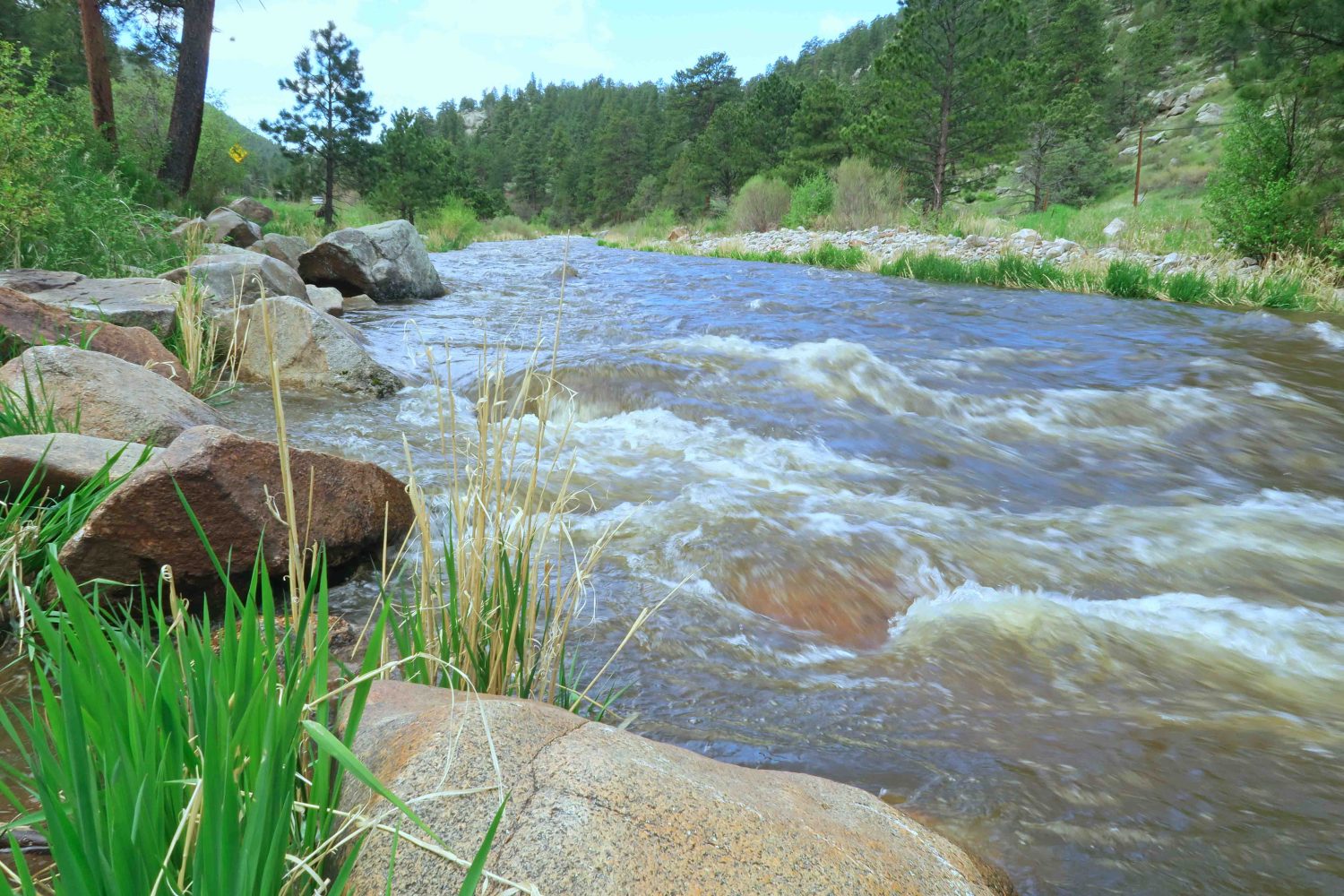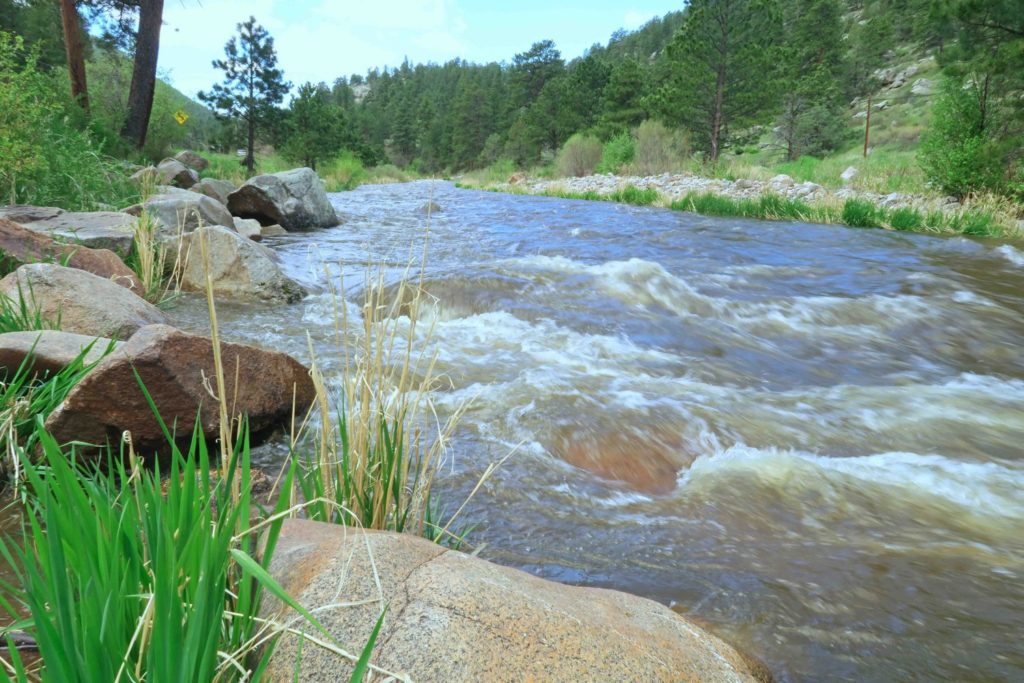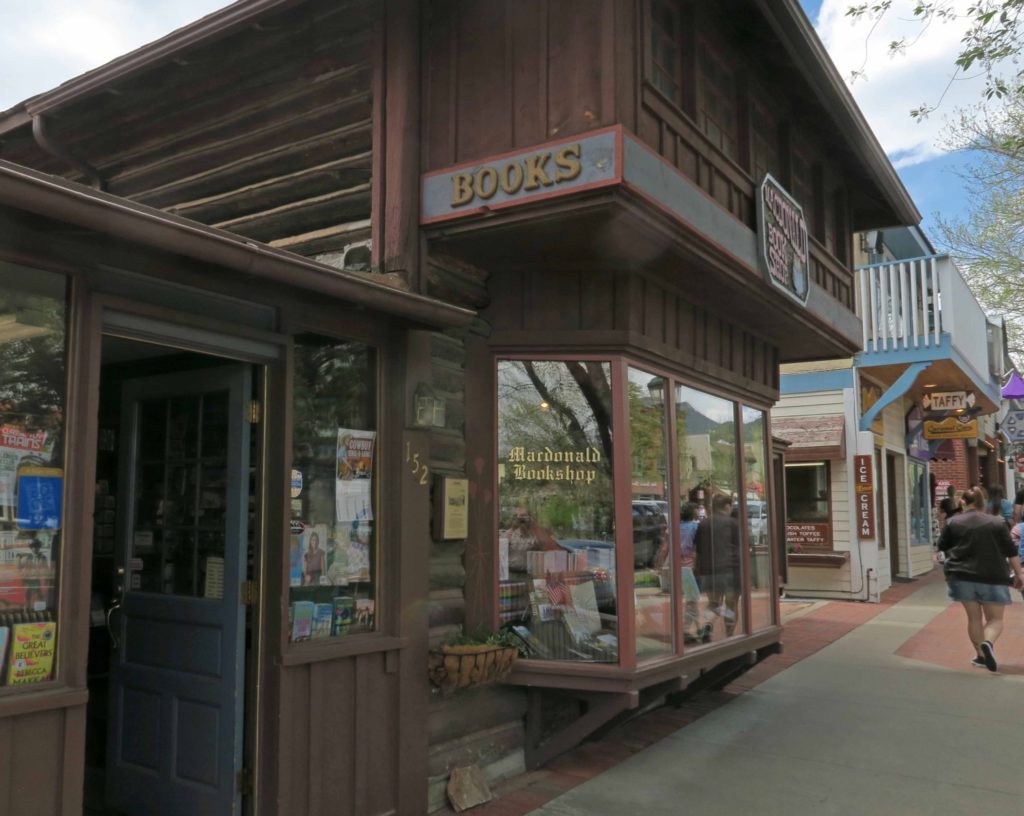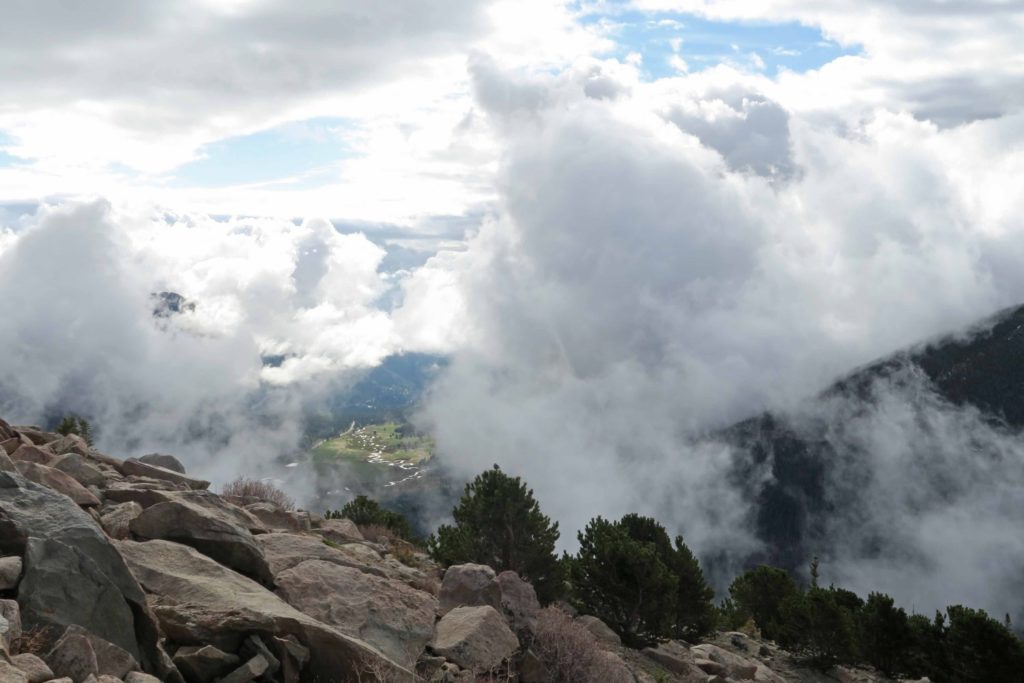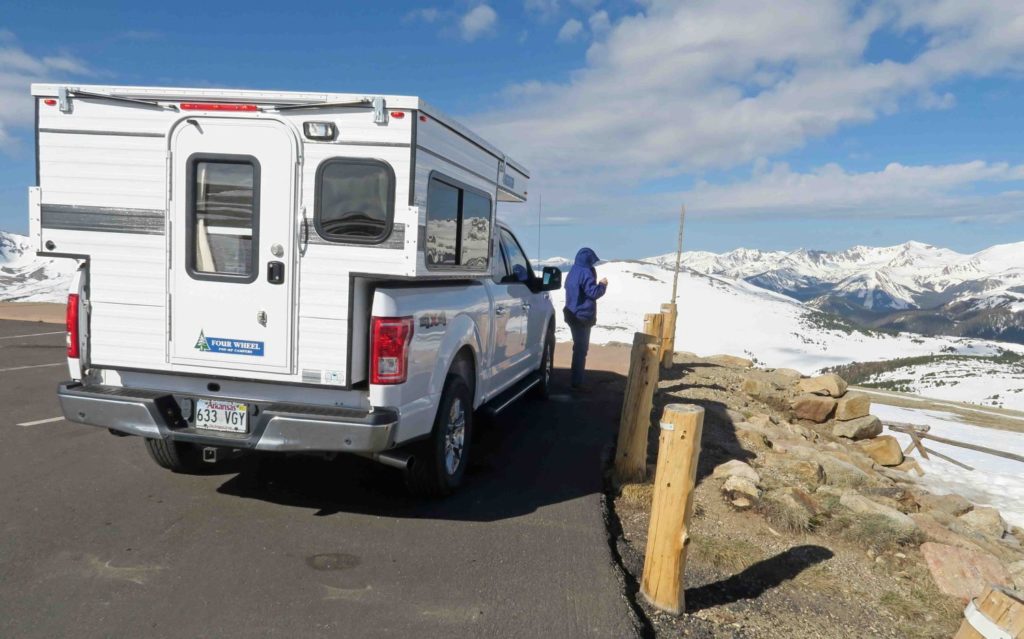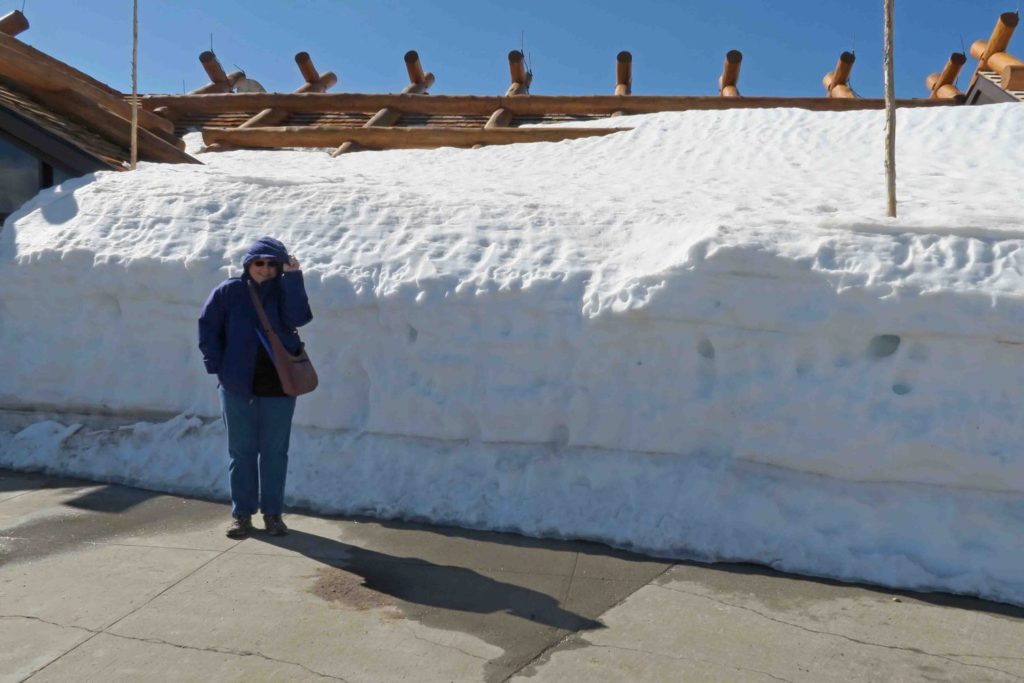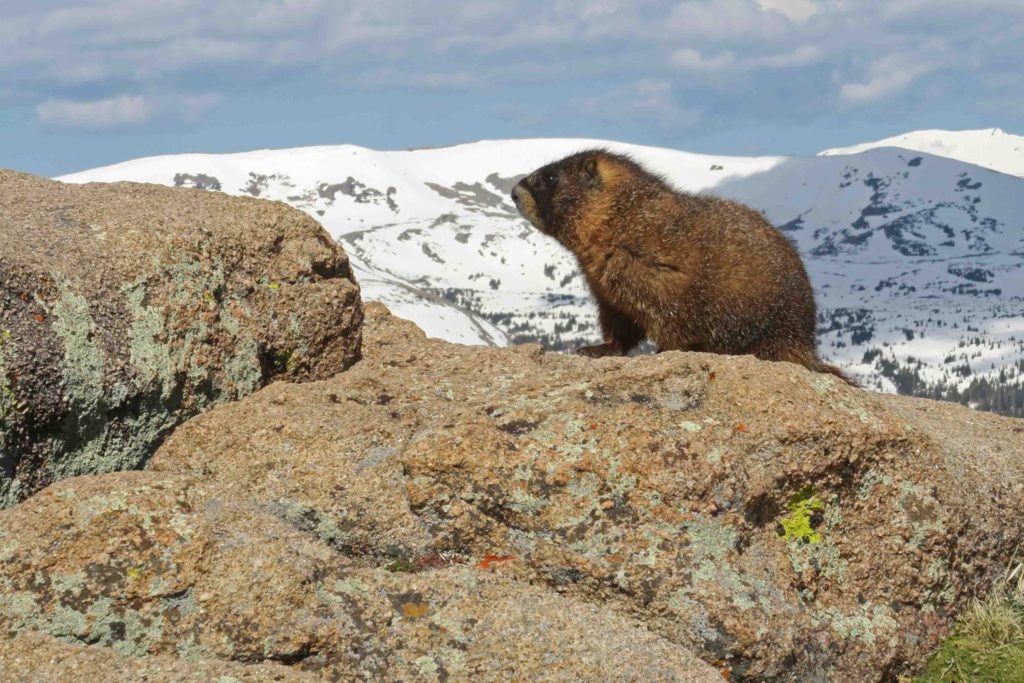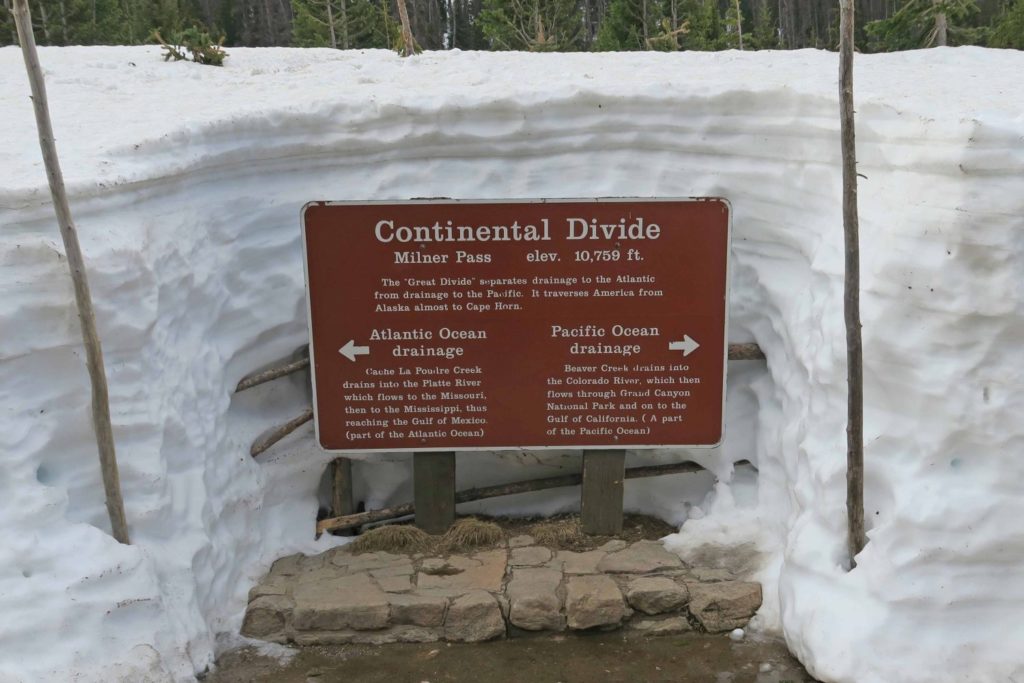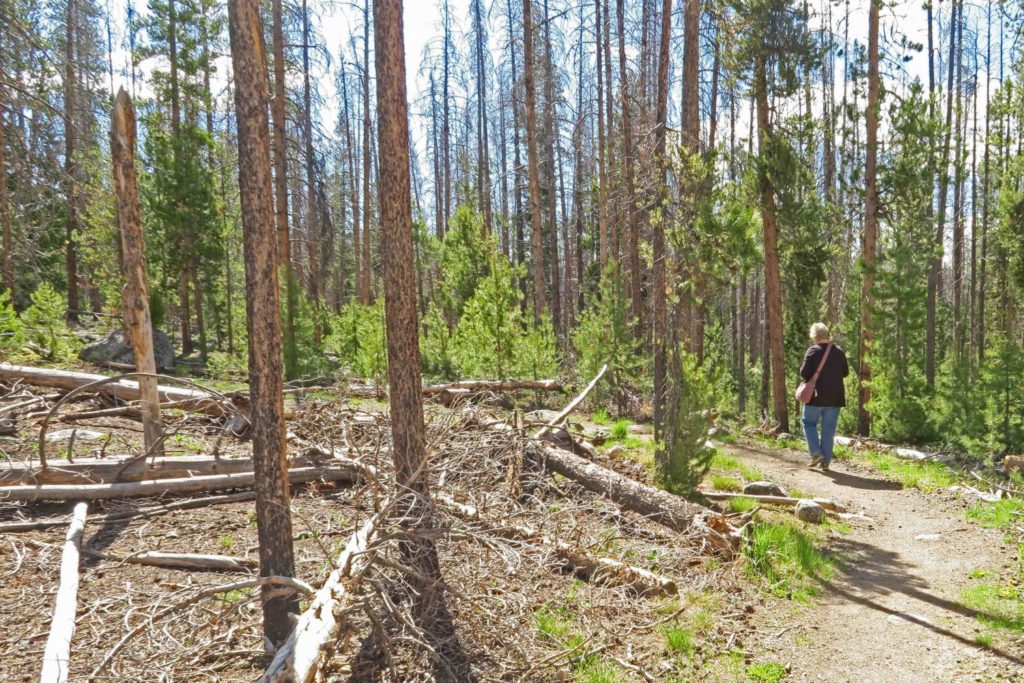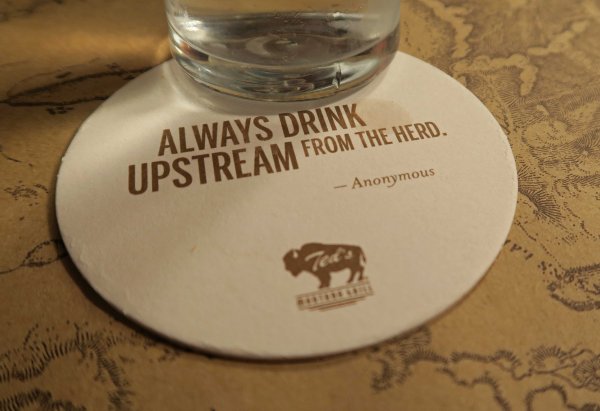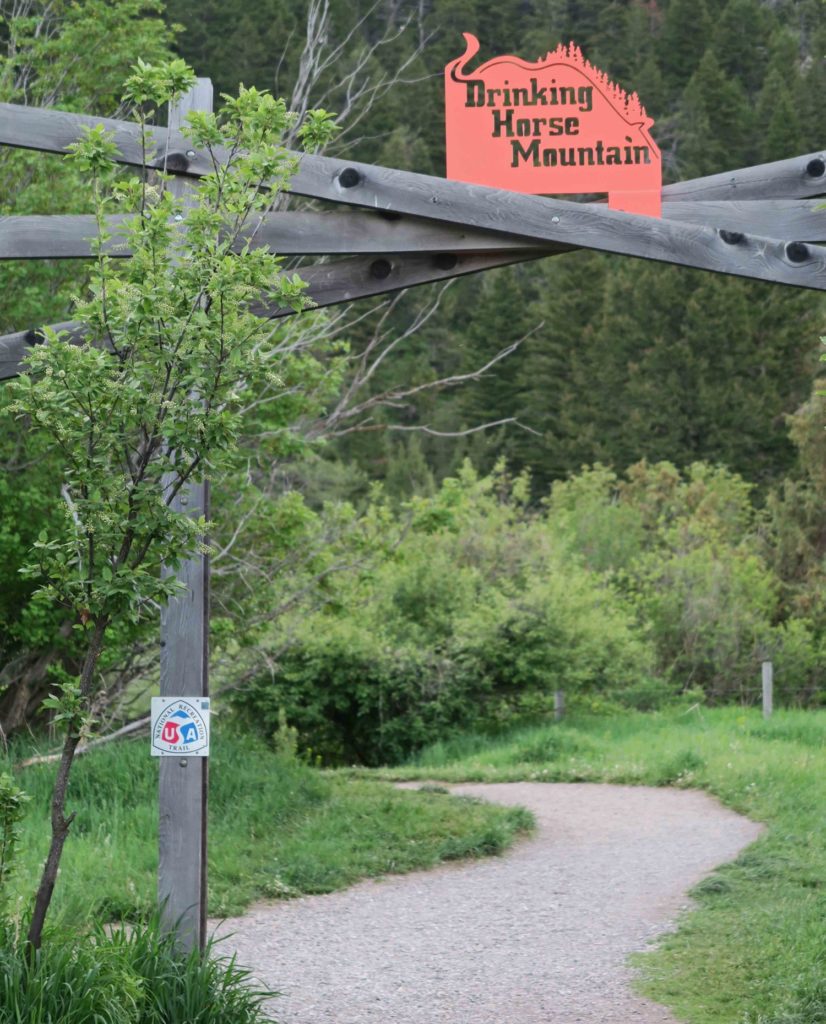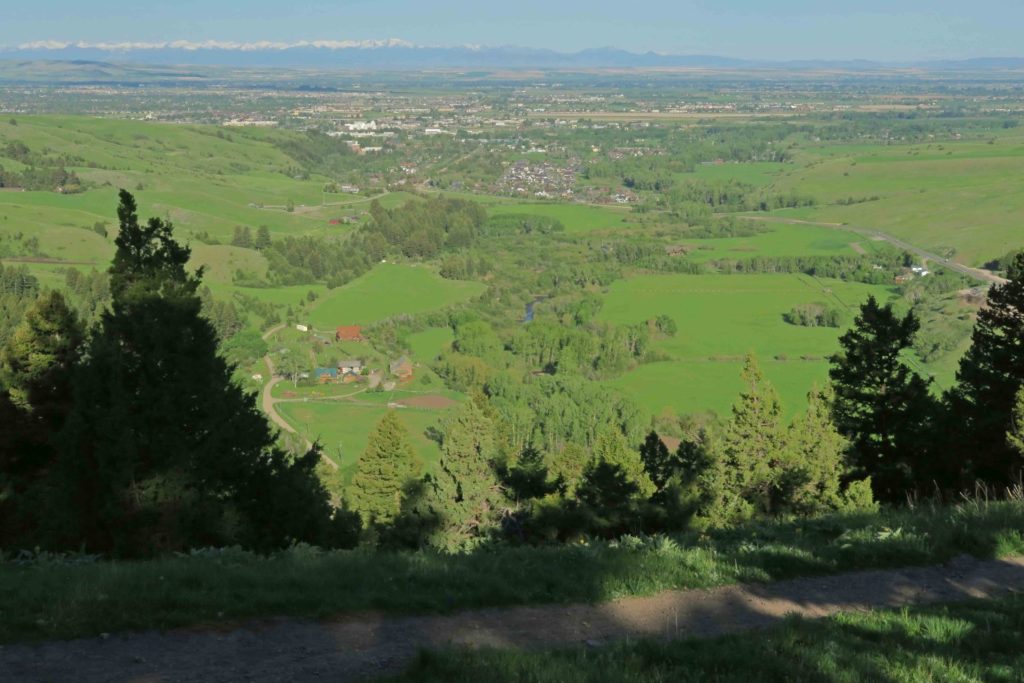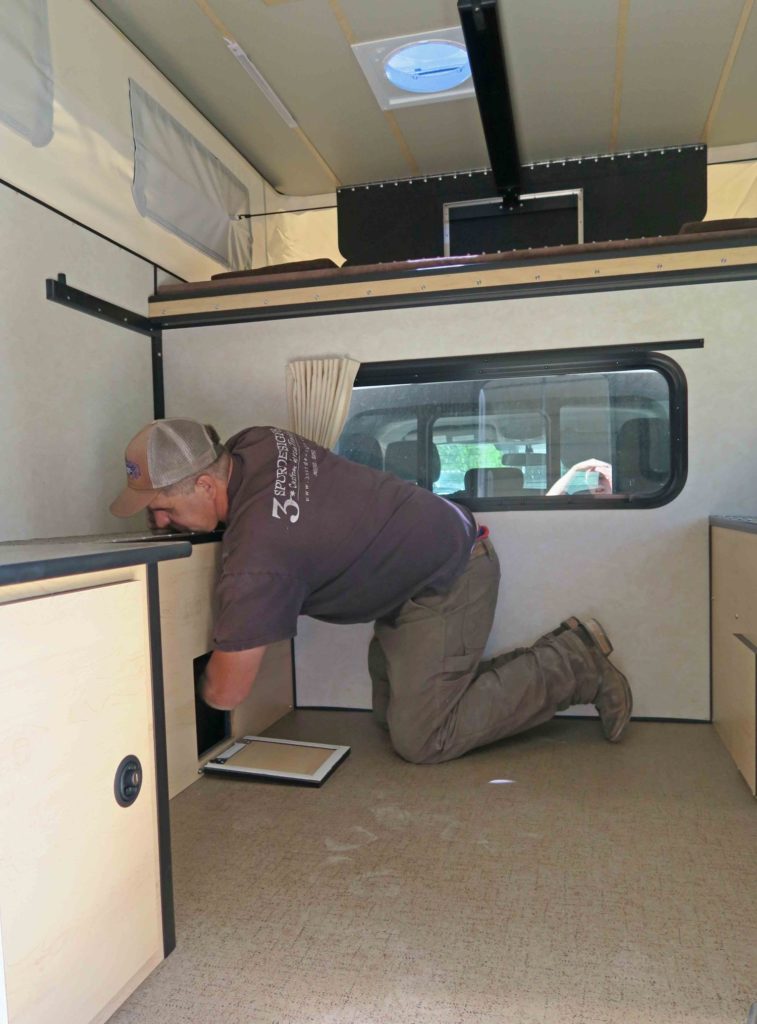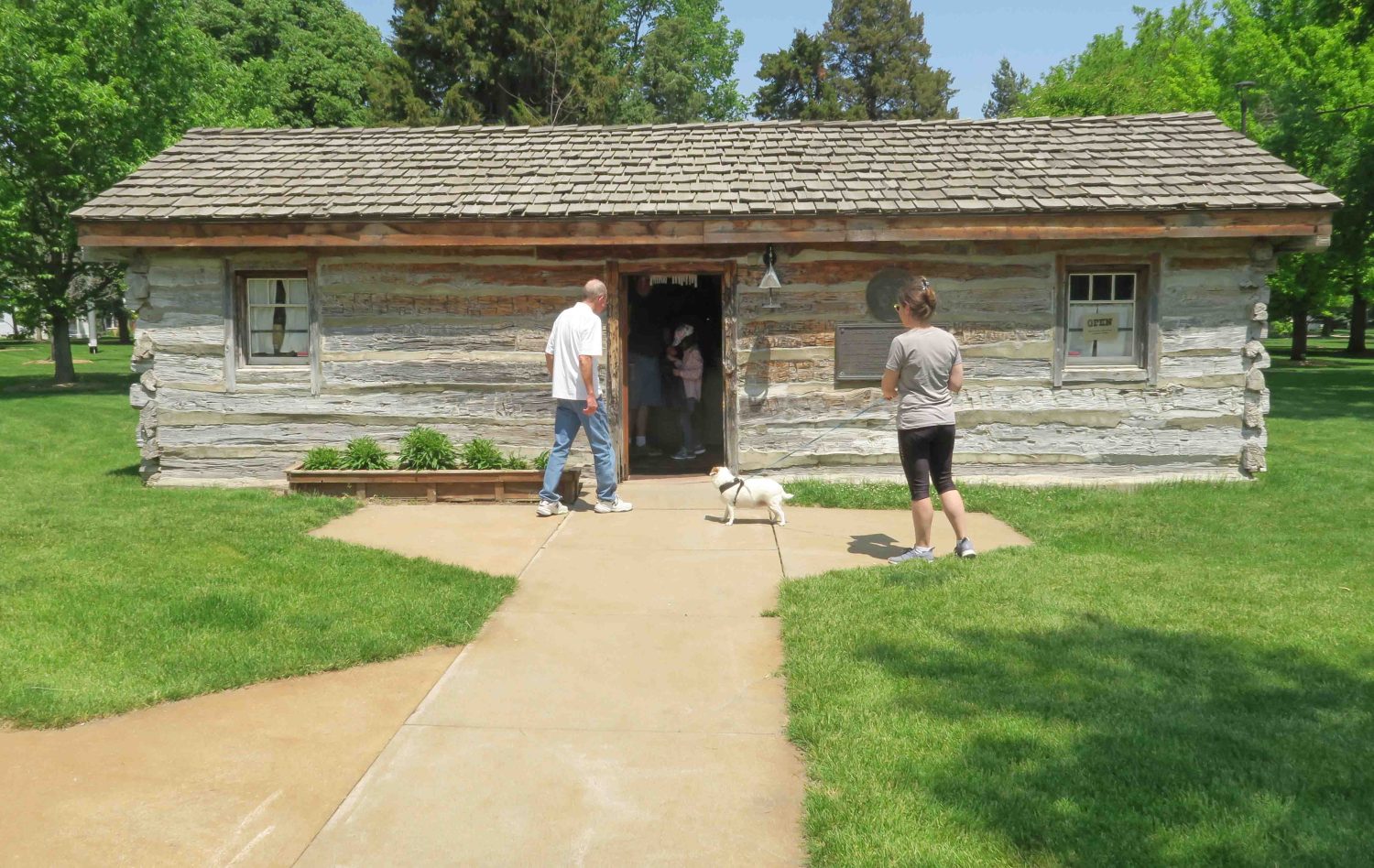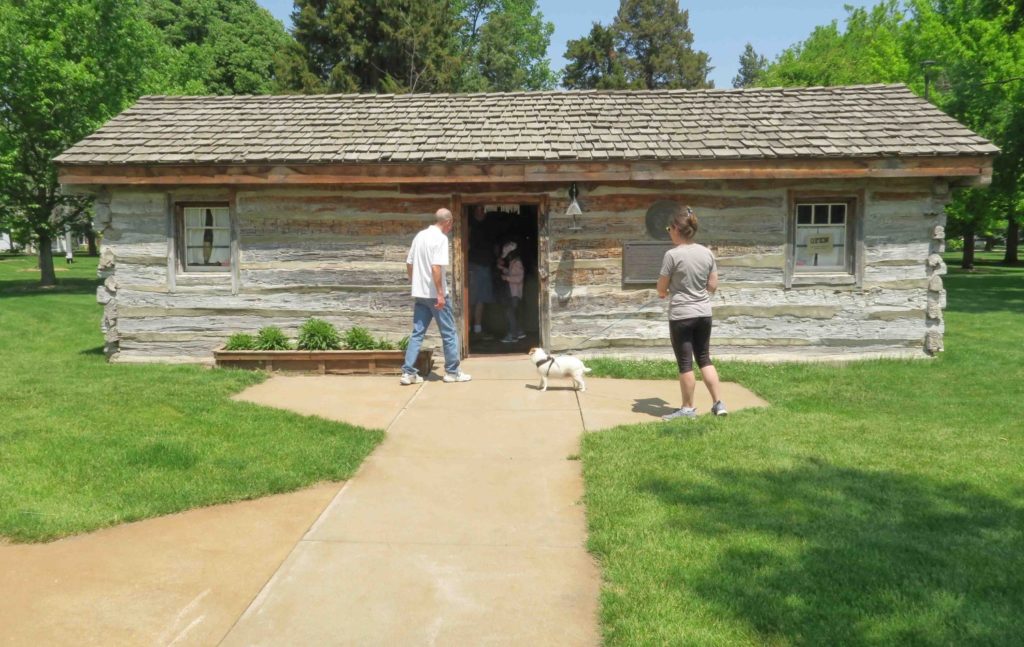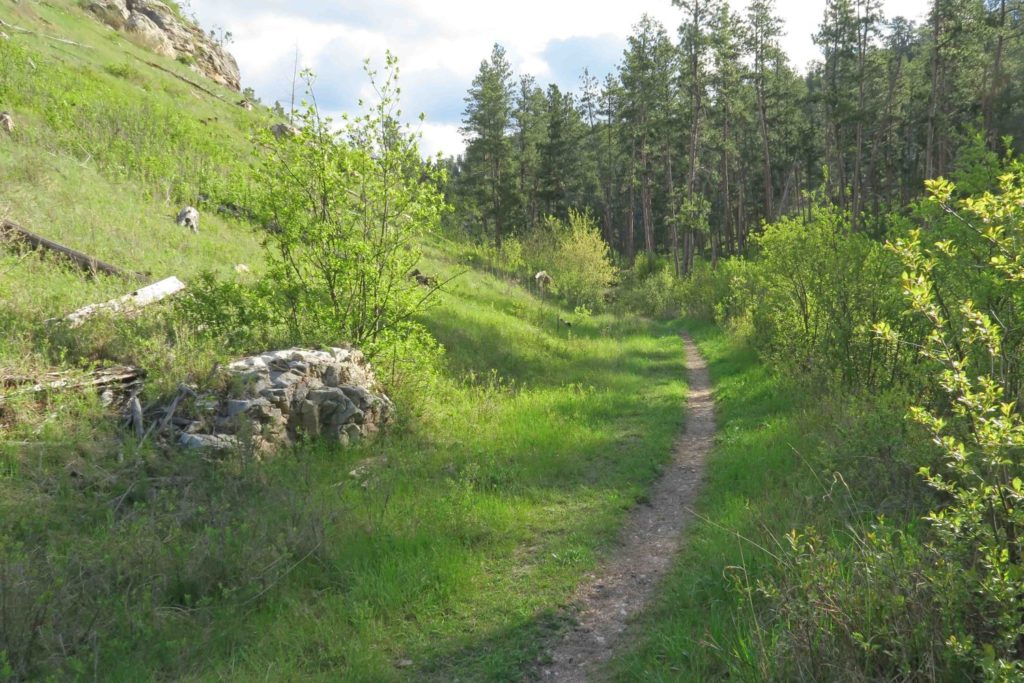Pack Weight Revisited
“Carry as little as possible but choose that little with care.”
~ Earl Schafer

I have an obsession with pack weight. I got it early in my backpacking days while carrying a base-weight that must have been in the 45-pound range. After a few trips with a 3-pound sleeping bag, 4-pound pack, heavy stove, heavy leather boots, and lots of extra stuff I didn’t need, I began to make different choices when it was possible to replace or eliminate something. I have an older post, “Preparing for Multi-Day Backpacking Trips,” at ozarkmountainhiker.com that was well received. For this post, I’m focusing specifically on pack weight.
Over the last 20 years and after a lot of trial and error, I’m carrying a base-weight of 9–10 pounds when I’m using my lightest options. Base-weight is your pack-weight before adding food and water. The photo above shows my pack with food for two nights and water included.
Going lighter is all about personal choices. I’m sharing the following, not because this is how it should be done, but to give ideas and possibilities for going lighter. If you have a trick that works for you, please share with me through the contact page. I love to pick up good ideas from readers. I will mention brand names for clarity in this post, but I’m not endorsing any company.
The big three areas for discussion are Sleep System, Shelter, and the Pack. Reducing weight here has the most significant impact on pack weight.
1. Sleep System: Rest is essential to your trip’s success, so this is no place to skimp on cost—but a good down quilt is less than a sleeping bag. I use an Enlightened Equipment 20-degree down quilt and a silk bag liner for a weight of about 1 lb. 4 oz. Twenty-degree sleeping bags weigh around 2 lbs. 6 oz. to over 3 pounds.
I’ve used air sleeping pads with good results except for the occasional leak. There are lighter and more rugged options.
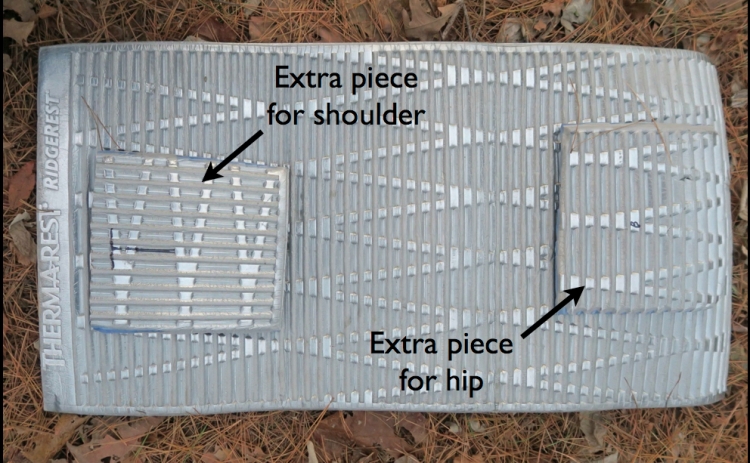
If I’m going my lightest, I prefer a Therm-a-Rest foam pad with two extra foam cutouts to avoid cold spots where most of my weight makes contact. I’m a side sleeper, so one extra 6×8-inch pad goes under my hipbone, and the other goes under my shoulder. I cut the two extra pieces from a full-sized foam pad to make it a 2/3 pad after cutting another piece for Hiker-dog. She loves her foam sleeping pad! In cold weather, I place my pack under my feet to get up off the ground.

For me, a pillow is essential. I now use a Platypus water pouch filled with air inside a small pillowcase along with extra clothes. During the day and in camp, I use the pouch to store extra water. If there’s water in the pouch in the evening, I pour it into my cookpot for the next morning’s eggs and coffee. I like double-use items.
2. Shelter: There are lots of options here, and I’ve tried several over the years. Right now, I’m using a Big Agnes Silver Spur 2-person tent (2 lbs. 12 oz.) when I expect cold temperatures and want to keep Hiker-dog in the tent with me. When I want to go my lightest, I use a ZPacks tarp. I love the tarp because it’s flexible, lightweight, and I can feel close to my surroundings. If it’s bug season, I pitch a screened Enlightened Equipment bivy sack under the tarp. I sometimes use a piece of plastic under the foam pad in non-bug season. A backpacking tent can easily weigh 4 lbs. The tarp, stakes, and plastic ground cloth add up to 16 oz. With a bivy sack, it’s 21 oz.
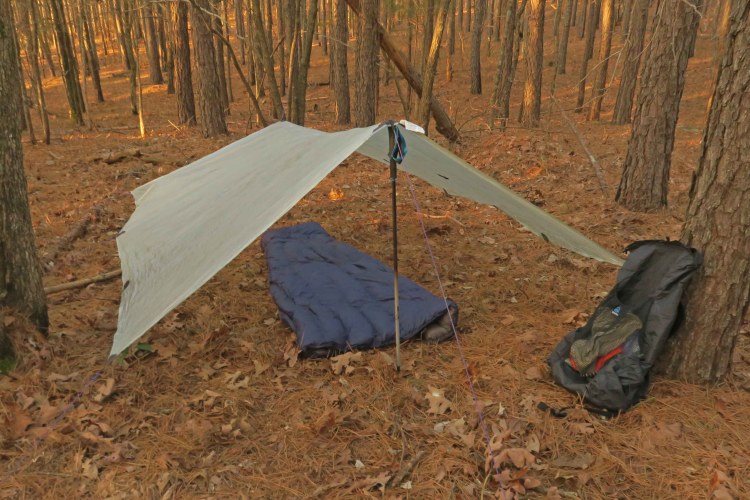
3 The Pack: On the John Muir Trail and for many Ozarks trips, I use my Granite Gear Crown 60 pack. I love that pack, and it handles a bear canister well. If I’m going my lightest and a bear canister isn’t required, I use a ZPacks Nero that is super light.
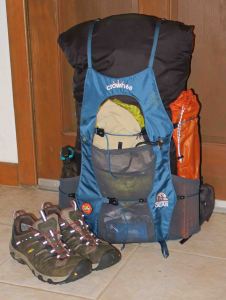
Packing the pack (my way) – Place all items that must remain dry in a trash compactor bag. Both the Zpacks and Crown 60 packs area simple tubes. Pockets, compartments, and zippers are nice but add weight.
The foam sleeping pad is placed against the pack walls, adding structure to the lightweight floppy pack. I press the tarp into the bottom so any moisture will move down from there. Then I press the trash compactor bag into the tube containing the down quilt, silk sleeping bag liner, and extra clothes. Lastly, I pack the food/kitchen bag.

Lightweight hacks: Here are a few tricks I’ve picked up from other hikers and reading:

Hydrating light: If I use a filter, it’s the Sawyer mini squeeze filter. If the water is cloudy, I sometimes pre-filter with my bandana and then the Sawyer filter. If I’m going my lightest, I use Aquamira water treatment drops, rebottled in small plastic bottles. I prefer the drops and leaving the filter in the bag or at home. Sometimes I carry both drops and a Sawyer, depending on what I expect to find out there.
Cooking light: Sometimes, I cook on a fire if there’s already a fire ring and it’s a high-impact campsite, but the stove I carry is a titanium Esbit stove with two fuel cubes for each day. I have a pocket-rocket type of stove that works well, and sometimes I carry that, but it’s heavier, and I despise giving pack space to fuel canisters. I have a Jetboil and would use it for a large group where we wanted to boil lots of water quickly without having a bunch of stoves. A Jetboil could save weight for a group, but it’s heavy for an individual. One of my main trail friends uses a Whisperlite, and he’s masterful with it, but it is a slightly heavier option.
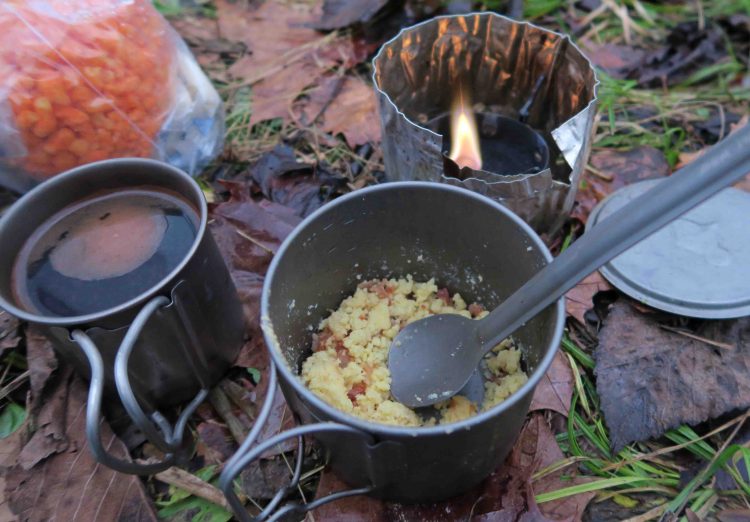
My cookpot (Toaks 550 ml) and cup are titanium. Some prefer a larger pot, but this one boils water for coffee and scrambled eggs, although it does get close to the rim with evening meals. I made a pot cozy using foam and Gorilla Glue that extends the cooking time and keeps the food warm while I eat it. I love coffee and have a somewhat unique coffee recipe. I sometimes wish my mug were bigger, but it fits nicely inside my pot.
Food is generally heavy. I rarely use commercial freeze-dried meals, preferring to pack my own using soups, instant potatoes, and Knorr meals as a base. Add dehydrated vegetables and freeze-dried chicken to make good meals with less packaging and weight. I carry trash in an empty coffee bag. It’s light, durable, and I don’t have to look at my trash as with a plastic bag.
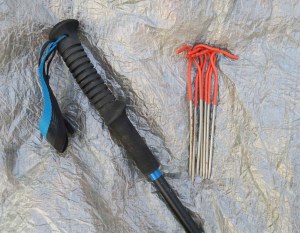
Trekking poles: Hiking poles aren’t a necessity, but I find they improve my stability, especially going downhill. They can also serve a dual purpose as tarp poles. Lightweight and simple are my favorite features. I don’t care for fancy adjustments/shock absorbers; I sometimes see hikers playing with their stick lengths to the point of frustration because of tricky mechanisms. I use Black Diamond Distance Z trekking poles (non-adjustable).
Shoes and socks: I wear lightweight, low-top hiking shoes or trail running shoes. I use crocs for creek crossing and around camp. I carry two pairs of Darn Tough socks with one pair on my feet and a backup pair in my pack. Everything adds up, so wearing lightweight clothes makes a difference in the weight your knees and feet will feel on the trail.
Personal items: What do I really need? I used to tweak around with toothbrushes, trying to lower the weight. I settled on tooth powder for a while instead of toothpaste. Now I just carry a roll of floss; that’s all. I floss each evening. Each morning I snap off a green twig and “brush” my teeth while walking along. After a few minutes, my teeth feel as clean as ever.
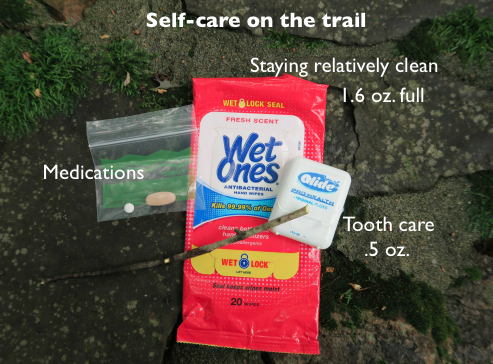
Luxury item: Give yourself one. It might be an iPod or some other item that adds to your enjoyment. I love my double-wall titanium mug, but it would qualify as a luxury item, so it never makes backpacking trips. My favorite luxury item is a package of wet-wipes. It feels good to clean up before sleeping, keeps the silk bag liner cleaner, and keeps down the stink.
Speaking of stink…. proper pooping is important! There’s a whole book on the subject! For the Ozarks, bury your business away from the trail or water, and pack out any toilet paper. I like to use leaves when possible to reduce the use of toilet paper, although I still carry a little. I like what Ultralight Backpackin’ Tips by Mike Clelland has on this subject and many more.
Life is all about nuanced choices, and the same is true of packing light. Experimenting with your gear can be fun and add to the anticipation of a trip, or it can drive you crazy and annoy those around you.
I think maybe “closet ultra-light backpacker” is the way to go. Quietly make decisions that reduce your pack weight, but don’t initiate conversations about subtle differences between the Toaks titanium cookpot over the MSR Titan Camping Kettle. It is better to have campfire conversations about the trail, scenery, and life.
Enjoy your light pack and the places your happy feet will take you!
If you want to hit some beautiful Arkansas and Missouri trails, pick up my book, Five-Star Trails: The Ozarks.
The post Pack Weight Revisited appeared first on Menasha Ridge Press Blog.


